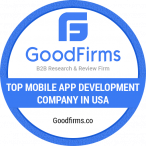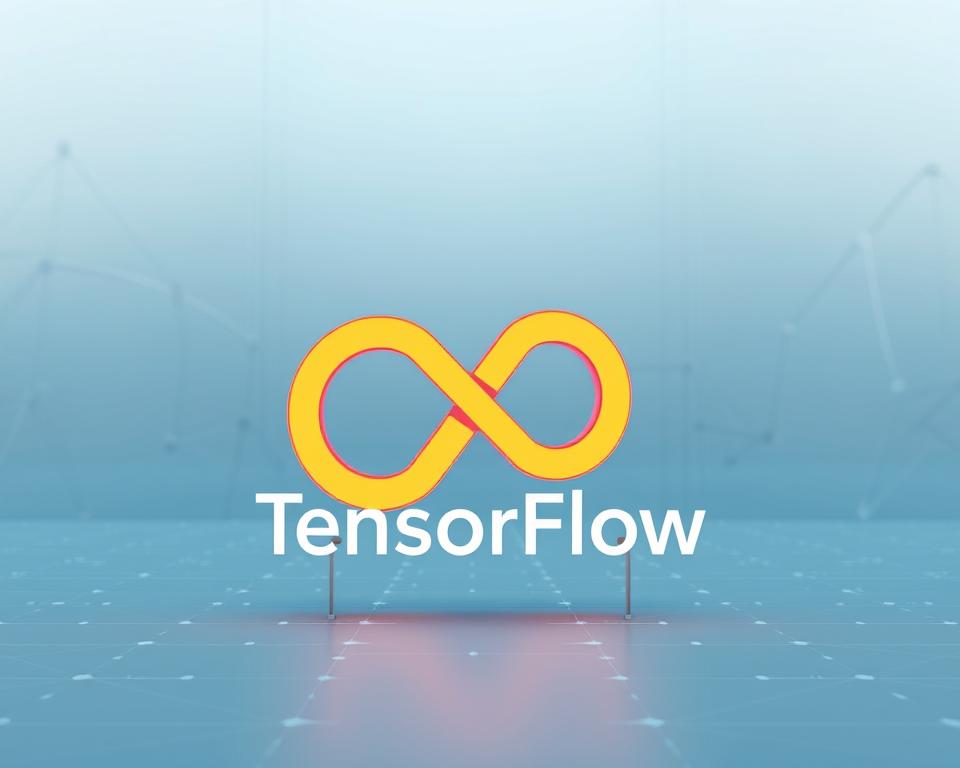AI development is changing how we make and use apps. Machine learning is leading this change. Developers must keep up with new frameworks and technologies, like deep learning. This article will look at the top frameworks for AI apps.
Choosing the right framework is key for smart and feature-rich apps. The best frameworks help developers create new and useful solutions. We’ll talk about TensorFlow, PyTorch, and Microsoft’s Cognitive Services in this article.
These frameworks are at the forefront of AI, machine learning, and deep learning. They are used by top companies for AI apps. Knowing each framework’s strengths and weaknesses helps developers choose the best for their projects.
Table of Contents
Key Takeaways
- AI development is transforming the way we build and interact with applications
- Machine learning and deep learning are key technologies for building AI-powered apps
- Choosing the right framework is crucial for creating intelligent and feature-rich applications
- TensorFlow, PyTorch, and Microsoft’s Cognitive Services are leading AI development frameworks
- Understanding the strengths and weaknesses of each framework is essential for making informed decisions
- Developers need to stay up-to-date with the latest frameworks and technologies to build innovative and effective solutions
Understanding AI Application Development Fundamentals
AI-powered apps are changing how we use technology. Knowing how to develop these apps is key to making them successful. To make AI-based mobile applications, you need to understand machine learning and natural language processing well.
At the heart of AI apps are machine learning algorithms. These algorithms let apps learn from data and make smart choices. Natural language processing is also vital, allowing apps to understand and create human-like language. Together, these parts help AI apps do things like recognize images, understand speech, and predict outcomes.
To build great AI apps, developers must know these basics well. They need skills in programming languages like Python, Java, or C++. They also need to know about AI frameworks and tools. With these skills and knowledge, developers can make AI apps that are easy to use, interactive, and very useful.
Core Components of AI Applications
- Machine learning algorithms
- Natural language processing
- Computer vision
By grasping these core parts and what’s needed to develop them, developers can make AI apps that are changing the world. These apps are making big impacts in many fields and changing how we live and work.
Key Considerations Before Choosing an AI Framework
Choosing the right AI framework is key for an AI app’s success. The app’s type, complexity, and goals are important. Deep learning and computer vision need special thought when picking a framework.
The framework must grow with your app, perform well, and work on various platforms. These points help developers pick the right AI framework. Some key things to think about include:
- Scalability: Can the framework handle large amounts of data and traffic?
- Performance: Does the framework provide fast and accurate results?
- Compatibility: Is the framework compatible with the desired platforms and devices?
By looking at these factors and what your app needs, developers can make a smart choice. This ensures their app does well in deep learning and computer vision.
| AI Framework | Scalability | Performance | Compatibility |
|---|---|---|---|
| TensorFlow | High | High | Multi-platform |
| PyTorch | High | High | Multi-platform |
TensorFlow: Google’s Open-Source AI Framework
TensorFlow is a widely-used open-source AI framework that has changed the game in machine learning. It was created by Google and offers a flexible, scalable design. This makes it perfect for many different uses.
TensorFlow is all about making machine learning and deep learning easier. It lets developers create and use AI models with ease. Its open-source nature has made it a hit with developers, who love to contribute and share their skills.
TensorFlow Architecture Overview
TensorFlow’s design is modular, making it easy to work with other tools. This design also means it can handle big tasks well. It’s great for large projects.
Key Features and Capabilities
TensorFlow stands out for several reasons:
- It supports deep learning and machine learning algorithms.
- It has automatic differentiation for quick prototyping.
- It’s designed for distributed training, perfect for big projects.
Best Use Cases and Applications
TensorFlow is great for many things, like:
- Computer vision
- Natural language processing
- Predictive analytics
TensorFlow is a top-notch, flexible open-source AI framework. Its popularity shows how versatile and easy it is to use. It’s a go-to for developers and companies wanting to use machine learning and TensorFlow in their projects.
PyTorch: Facebook’s Dynamic AI Framework
PyTorch is a dynamic AI framework that’s becoming more popular. It’s known for being easy to use and quick to prototype. It’s especially good for deep learning tasks and is widely used in the industry.
Some of the key benefits of using PyTorch include:
- Easy to learn and use, even for developers without extensive AI experience
- Rapid prototyping capabilities, allowing for faster development and testing of AI-powered apps
- Strong support for deep learning applications, making it an ideal choice for developers working on complex AI projects
As a dynamic AI framework, PyTorch offers a flexible platform for AI apps. It’s great for deep learning tasks, which is why many developers choose it. With PyTorch, developers can quickly create and test AI apps. It’s perfect for those wanting to use AI in their projects.
The Best Frameworks for Building AI-Powered Apps: A Comprehensive Overview
Choosing the right framework is key when building AI-powered apps. Developers have many options, but they must pick the best one for their app. Enterprise-grade frameworks are great for big apps, offering a strong and growing base. For smaller apps, lightweight solutions are better, making development quicker and easier.
It’s important to think about what kind of AI app you’re making. For apps needing complex AI, like TensorFlow or PyTorch, are best. But for apps needing fast processing, like Core ML or TensorFlow Lite, are better.
- TensorFlow: An open-source framework developed by Google
- PyTorch: An open-source framework developed by Facebook
- Core ML: A lightweight framework developed by Apple
When picking a framework, look at scalability, performance, and how easy it is to use. The right framework makes sure your app works well and meets user needs. With the right AI-powered apps framework, developers can make apps that change our lives and work.
Microsoft’s Cognitive Services and Azure AI
Microsoft’s Cognitive Services and Azure AI offer a wide range of tools for AI apps. Developers can add AI to their apps easily, without needing to know a lot about machine learning. Azure AI has services like computer vision, natural language processing, and machine learning.
Using Microsoft Cognitive Services is easy. Developers can use pre-built AI services like image and speech recognition through simple APIs. This lets them focus on building their apps, not on creating AI from scratch. Azure AI also lets developers create custom AI models for their needs.
Pre-built AI Services
Microsoft’s pre-built AI services include image and speech recognition, natural language processing, and machine learning. These services are easy to add to apps using simple APIs. For example, Azure Computer Vision can analyze images, and Azure Speech Services can enable speech recognition and synthesis.
Integration Capabilities
Azure AI makes it easy to add Microsoft’s AI services to apps. This way, developers can add AI to their apps without big changes. With Azure AI, apps can be scalable, secure, and reliable.
Fast.ai: Making AI Development More Accessible
Fast.ai is a platform that makes AI development easy for developers. It’s great for building and testing AI-powered apps fast. It’s especially good for machine learning projects and is widely used in the industry.
Some of the key benefits of using Fast.ai include:
- Easy to use interface
- Rapid prototyping capabilities
- Support for machine learning applications
Fast.ai is perfect for developers new to AI development. Its simple interface and strong support for machine learning make it ideal for creating
Using Fast.ai lets developers focus on making and using AI-powered apps. This is great for those who want to start with AI development without getting bogged down in complex tasks.
Apache MXNet: Scalable Deep Learning
Apache MXNet is a scalable deep learning framework. It’s flexible and adaptable, perfect for developers. Its architecture offers scalability, flexibility, and ease of use, key for efficient deep learning model development.
The performance metrics of Apache MXNet are impressive. It supports fast model training and deployment. This makes it a top pick for developers aiming to quickly build and deploy scalable deep learning models.
Architecture Benefits
- Scalability: Apache MXNet can handle large amounts of data and scale to meet the needs of complex deep learning models.
- Flexibility: It supports a wide range of programming languages and can be used for various deep learning tasks.
- Ease of Use: Apache MXNet provides a simple and intuitive API, making it easy for developers to build and deploy deep learning models.
Performance Metrics
Apache MXNet’s performance metrics are a key factor in its popularity. It provides fast model training and deployment capabilities. This makes it ideal for developers needing to quickly build and deploy scalable deep learning models.
Enterprise Implementation
Apache MXNet’s enterprise implementation is straightforward. It’s easy to incorporate into existing apps. Its scalable deep learning capabilities and performance metrics make it a favorite among enterprises. They look to build and deploy complex deep learning models.
Natural Language Processing Frameworks
Natural language processing (NLP) frameworks help computers understand human language. They enable tasks like text analysis and figuring out the mood of text. These tools are key for making apps that talk like humans.
Some key features of NLP frameworks include:
- Text analysis: the ability to analyze and extract insights from text data
- Language translation: the ability to translate text from one language to another
- Sentiment analysis: the ability to determine the sentiment or emotional tone of text
Using NLP frameworks boosts text analysis skills. This makes analyzing big texts more accurate and quick. It’s great for chatbots, translation tools, and natural language processing studies.
Popular NLP frameworks are NLTK, spaCy, and Stanford CoreNLP. They offer tools and resources for NLP projects. You get pre-trained models, libraries, and APIs.
In conclusion, natural language processing frameworks are essential for apps that talk like humans. They help developers create better text analysis tools. This opens up many possibilities for different applications.
| NLP Framework | Features | Applications |
|---|---|---|
| NLTK | Text analysis, sentiment analysis | Customer service chatbots, language translation software |
| spaCy | Language modeling, entity recognition | Natural language processing research, text classification |
| Stanford CoreNLP | Part-of-speech tagging, named entity recognition | Information extraction, question answering |
Computer Vision-Specific Frameworks
Computer vision lets computers understand visual data from the world. Building smart solutions with it needs special frameworks like OpenCV and deep learning libraries. These tools help with image and video analysis, object detection, and facial recognition.
Using OpenCV with deep learning libraries makes computer vision models better and faster. Real-time processing solutions are key for quick analysis and action, like in surveillance and self-driving cars.
- Improved image and video analysis
- Object detection and recognition
- Facial recognition and tracking
Developers can make new apps that change how we see the world with computer vision. Whether it’s through deep learning vision libraries or OpenCV, the future is bright and full of possibilities.
Deployment and Scaling Considerations
When making AI apps, deployment and scaling are key. An app’s success depends on its ability to grow with more users. Cloud deployment options help apps grow and change as needed.
Scaling well needs good planning and thinking about performance and monitoring. Using cloud deployment options helps apps work well, even when busy. Important things to think about include:
- Performance tricks like caching and content delivery networks
- Keeping an eye on things and fixing issues with real-time analytics
- Planning how to scale, like growing horizontally or vertically
By focusing on deployment and scaling
| Deployment Option | Scaling Approach | Performance Optimization |
|---|---|---|
| Cloud Deployment | Horizontal Scaling | Caching and Content Delivery Networks |
| On-Premise Deployment | Vertical Scaling | Load Balancing and Server Optimization |
Framework Selection Criteria and Best Practices
Choosing the right framework is key in AI development. Framework selection looks at scalability, performance, and how well it works with other systems. Developers need to check the framework’s documentation, community support, and how it fits with current systems.
For AI development, following a clear plan for framework selection is important. This means:
- Defining project needs and goals
- Looking at framework options for scalability, performance, and compatibility
- Checking community support and documentation
- Seeing if it works with existing systems
By sticking to these steps, developers can pick the best framework for their AI app. This leads to a successful AI development project.
Remember, the secret to a great AI app is picking the right framework and following best practices. This way, developers can make apps that are efficient, scalable, and high-performance. These apps will meet their users’ needs.
Conclusion
Creating AI-powered apps is a big challenge. It needs careful thought about many things, like choosing the right framework. By knowing what to look for in framework selection, developers can make apps that users will love. The right framework is key for an app’s success, affecting its growth, reliability, and how well it works.
In this article, we looked at top frameworks for AI apps, like TensorFlow, PyTorch, and Microsoft’s Cognitive Services. Each has special features for different AI tasks, like talking to machines, recognizing images, and deep learning. By picking the best framework for their project, developers can make apps that are smart, full of features, and can grow.
As AI app development keeps getting better, it’s crucial for developers to keep learning. By using the latest best practices and the best tools, they can make the most of AI. This way, they can create apps that change our lives and work for the better.



















